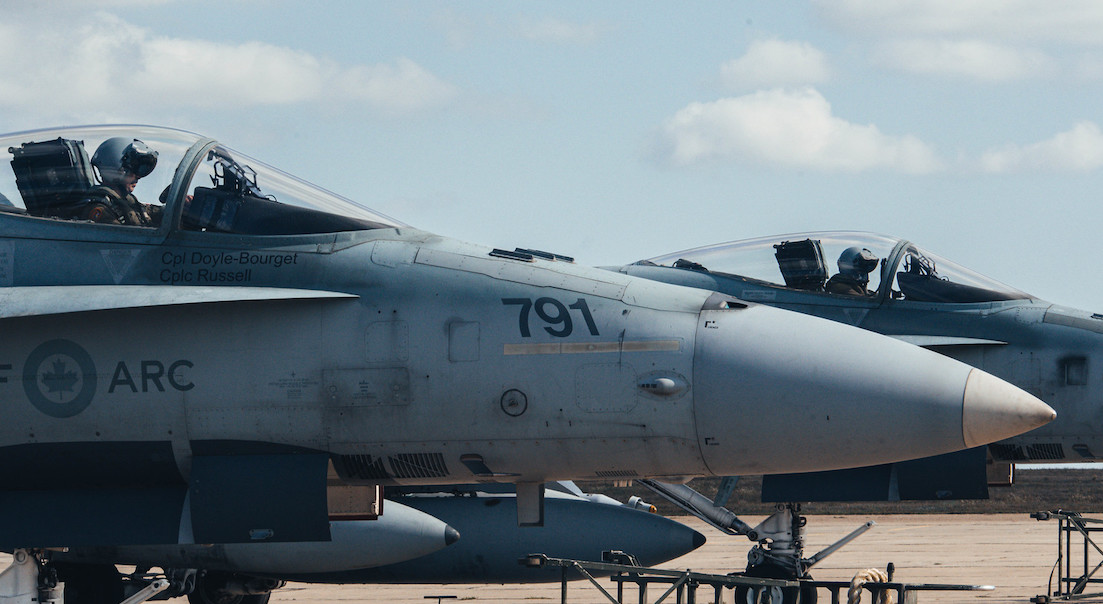Securing “space” will continue to play an increasing role in National Security. As part of Canada’s Defence Policy: Strong, Secure, Engaged, Canada is looking to increase emerging capabilities in space so as to maintain effectiveness and interoperability with allies and to develop capability enhancements in intelligence, satellite communications, and surveillance. This will help Canada to achieve its objectives of staying strong at home, being secure in North America, and to effectively engage in the world.
In this issue of Vanguard, we are excited to share an interview with BGen Michael Adamson, Director General Space and the Joint Force Space Component Commander of the Royal Canadian Air Force. Wearing two different hats, BGen Adamson is responsible for the management of the space enterprise in the Canadian Armed Forces and the provision and coordination of space effects and enablers for CAF operations, both at home and abroad. As space continues to emerge as a contested battleground, BGen Adamson pointed out that our allies are recognizing the growing role and importance of space to National Security, and operations, and as such, Canada is undertaking some sort of organizational evolution to reflect this new reality.
To get there, the creation of a Space Division is proposed. This Division will be responsible to the Commander of the RCAF for the generation and equipping of space capabilities for Force Employment missions. Part of this proposal includes a Wing and three Squadrons – Operations, Support, and Advanced Space Effects. This new Division is expected to be in place in the next 12-18 months. In terms of capabilities, the Brigadier-General provided an overview of the Enhanced Satellite Communication Project – Polar (ESCP-P), Surveillance of Space 2 (SofS 2), and Defence Enhanced Surveillance from Space – Project (DESSP).
As part of its North American mandate, Canada is also looking to modernize NORAD. In his article on NORAD renewal, Michael Dawson, PhD, sheds some light so that we can understand the impetus for significantly modernizing NORAD. It all boils down to the context of contemporary deterrence, the evolving Russian doctrine for the use of nuclear weapons, and technological developments that are outpacing NORAD’s existing technological base.
Other issues facing Canada as it relates to NORAD are to what extent it will invest in upgrading or renewing the North Warning System, contributing to land-, air-, and space-based sensors in the Arctic, and or its contribution to missile defence. P. Whitney Lackenbauer, Troy Bouffard, and Nancy Teeple from the North American and Arctic Defence and Security Network (NAADSN) point out that the window of opportunity for Canada is closing quickly. Canada must decide whether it wants to carve out its own niche in continental defence, drawing upon its current strengths – a “made in Canada” approach – and lead in those initiatives, or follow the United States lead and to fill in gaps assigned to it by its North America Arctic neighbour and primary ally.
As Canada looks to replace its fighters, LCol Dean C. Black (Ret’d) pens a timely article that explores some of the technological ideas resulting from early research and development into future cockpits, most notably head-down and helmet-mounted displays. A focus on supercockpit technologies can help us appreciate some of the differences exhibited by the three aircraft Canada is considering; namely, the Lockheed Martin F35A Lightning II; the Boeing F/A 18E/F Super Hornet; and the SAAB Gripen JAS 39E/F.
To round off this issue, I would like to introduce the Vanguard Game Changers selected for this edition: Natasha McLean, Vice President of Serco Canada Inc., and Kiduika Daniel Obedi, Vice President, Aerospace Platforms Business Unit at Gastops Ltd.
Thanks for reading this issue.
Stay safe.


